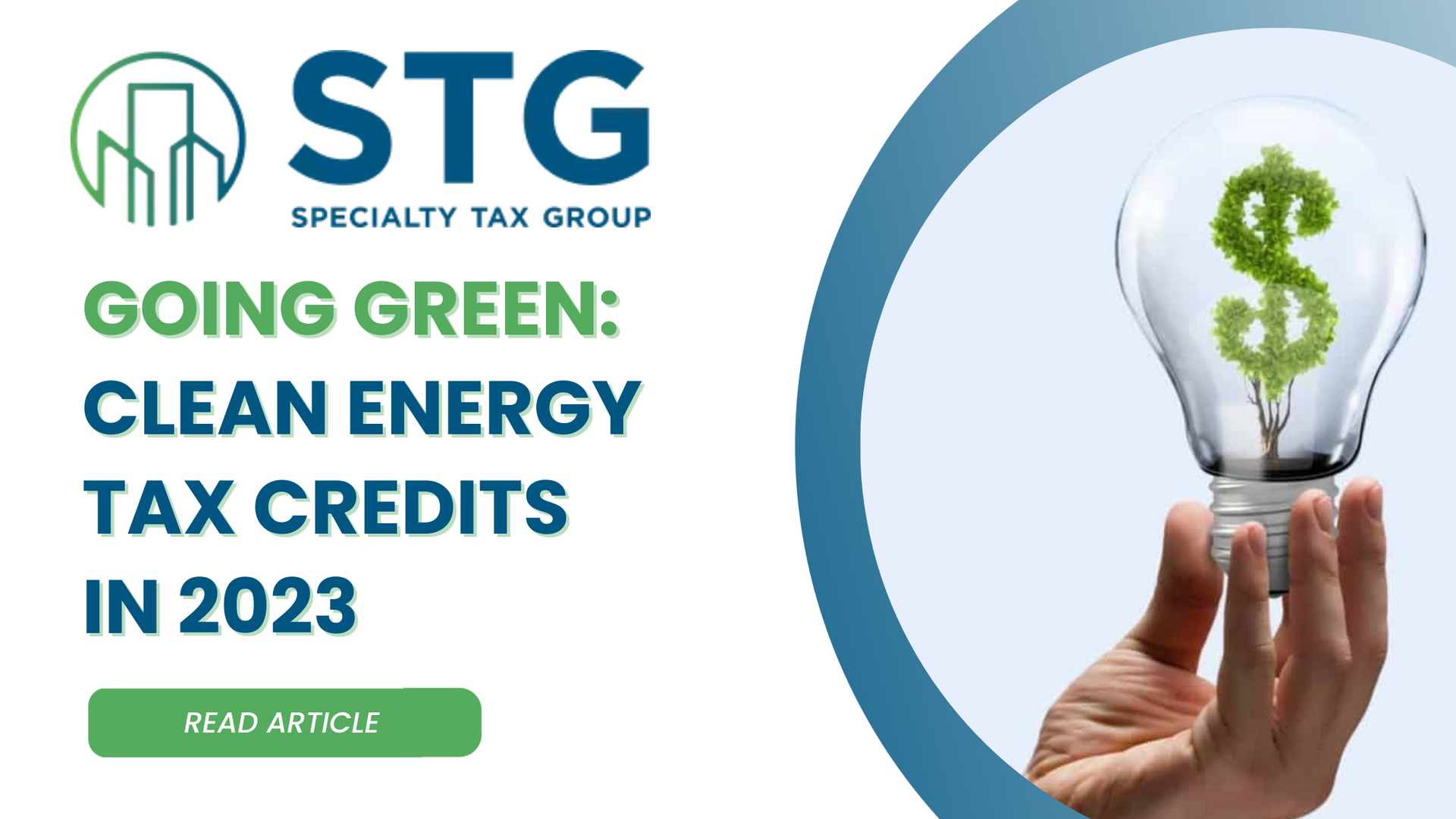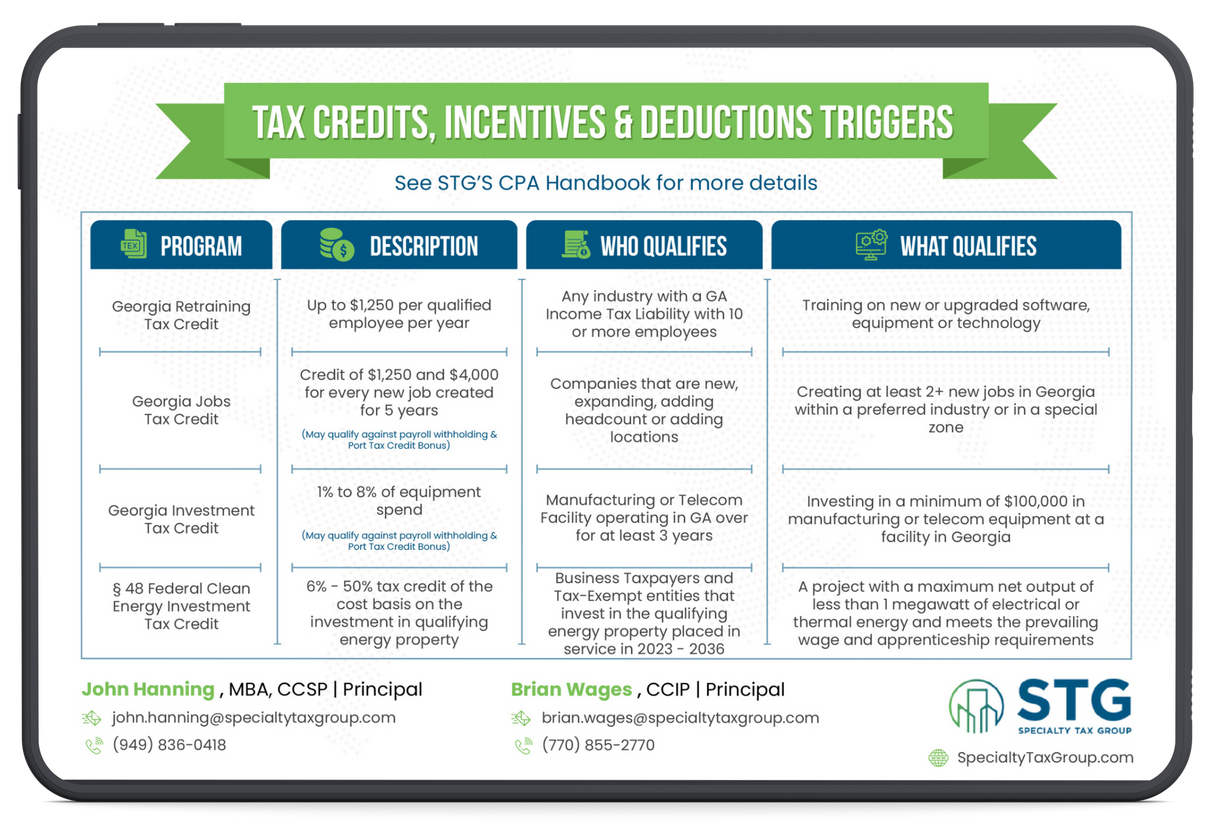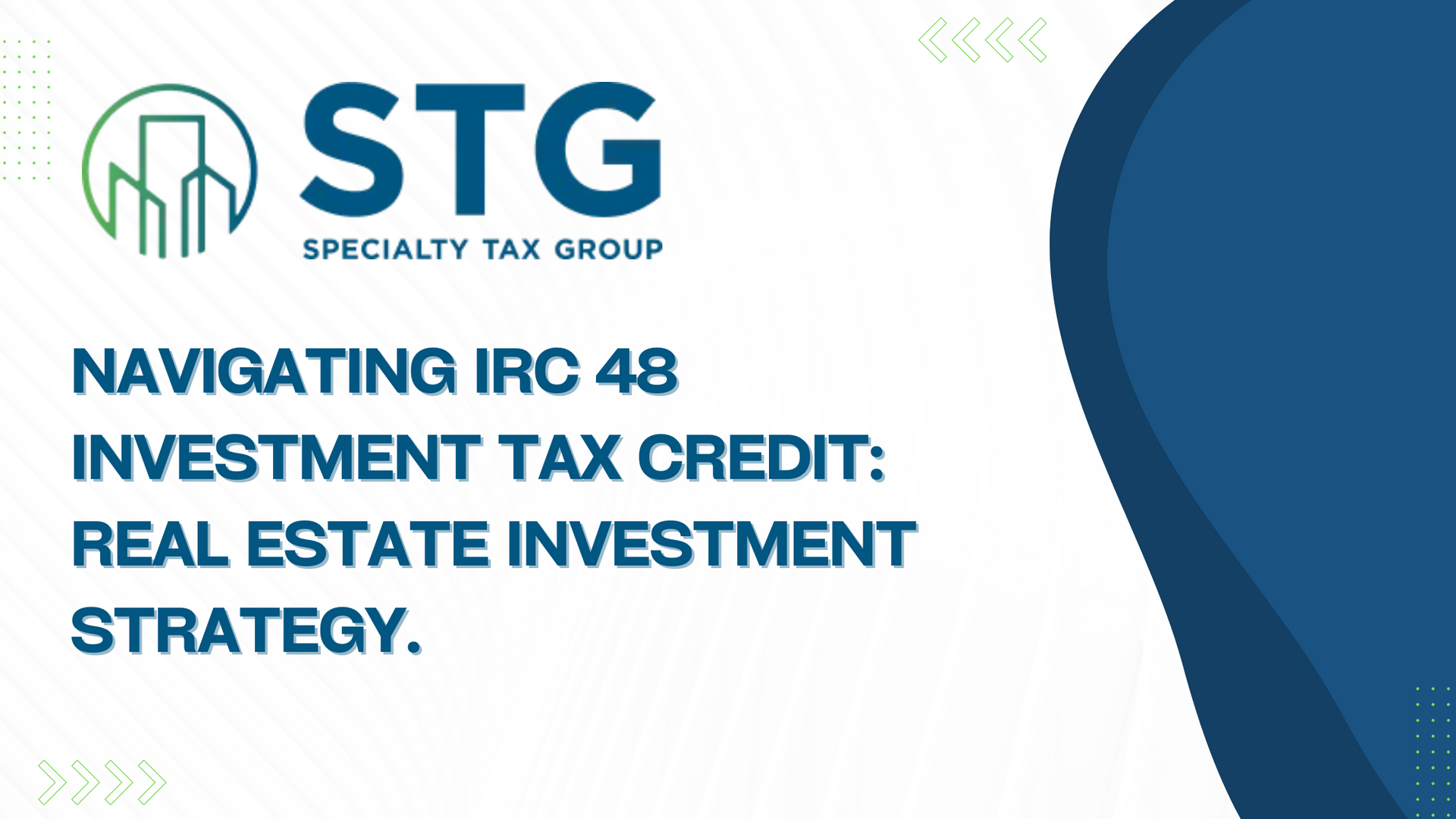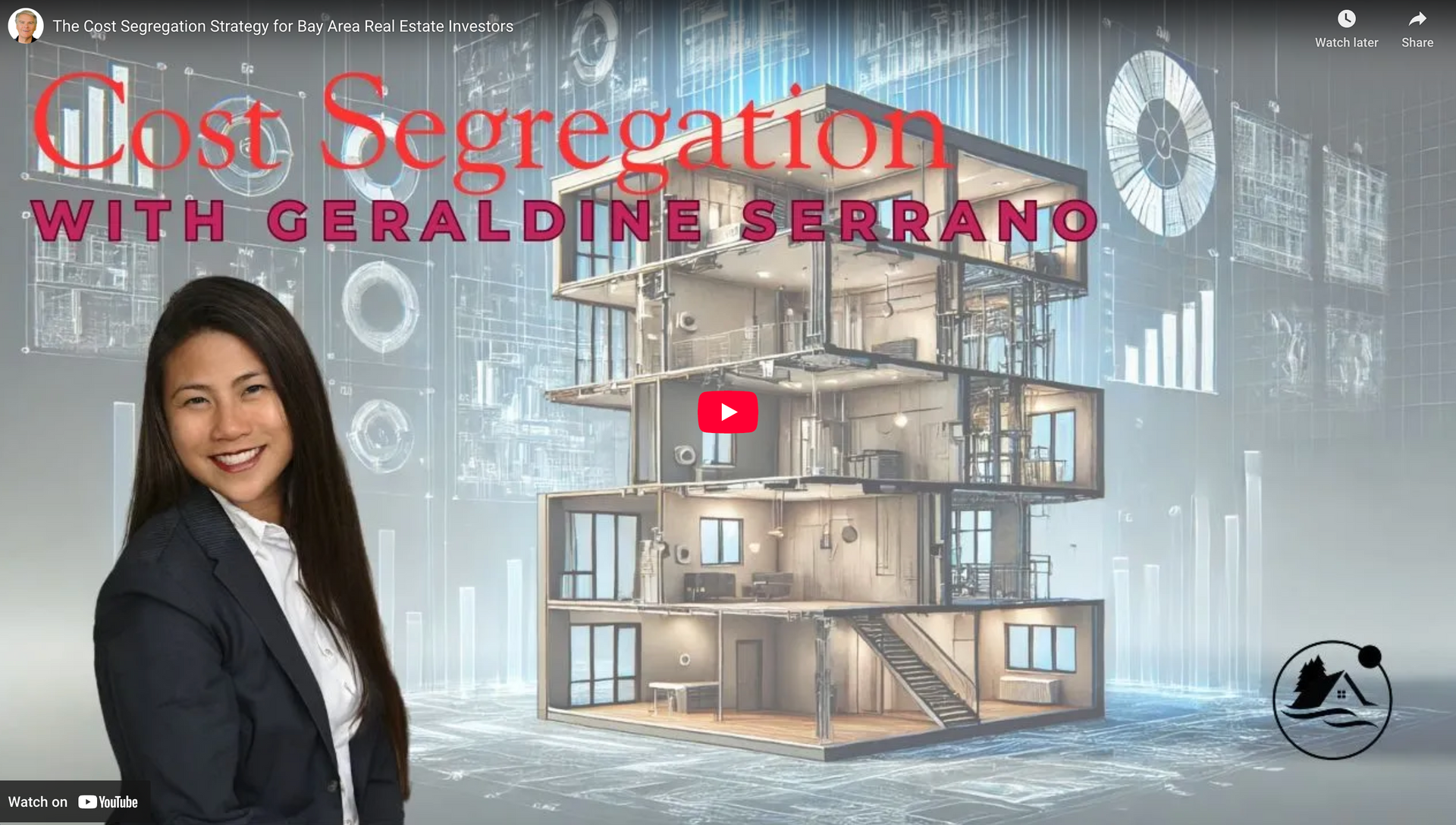This blog post has been researched, edited, and approved by John Hanning and Brian Wages. Join our newsletter below.
Newsletter Form
Green Energy Tax incentives play a pivotal role in shaping the energy landscape. By incentivizing clean energy investments, they drive the adoption of renewable energy sources, paving the way for a sustainable future.
With 2023 witnessing significant changes in green energy incentives tax law because of the Inflation Reduction Act (IRA), let's delve into the impact and importance of these credits.
Why Tax Credits Matter in Clean Energy
Tax incentives provide financial benefits, making renewable energy technologies more affordable and accessible. By reducing costs, they encourage:
- Greater adoption of systems like solar panels and wind turbines.
- Investment in energy-efficient projects and properties.
- A significant reduction in greenhouse gas emissions to combat climate change.
The Inflation Reduction Act
The Inflation Reduction Act is more than just legislation—it’s a bold step towards making clean energy accessible and appealing to a wider audience. At its core, it serves to reduce the federal income tax liability for owners, ensuring that the benefits of clean energy are felt in their wallets.
To ensure its lasting impact, the act is meticulously adjusted every year for inflation, safeguarding its relevance and effectiveness.
Understanding the Clean Energy Tax Credits for 2023
179D Energy Efficient Commercial Building Deduction
- What It Is:
A Federal Deduction that allows building owners, architects, contractors, and designers to qualify for up to $5.00 per square foot deduction.
- Who Qualifies: This is for the installation of energy-efficient lighting, heating and cooling systems, and building envelopes.
Additionally, professionals like architects, engineers, contractors, environmental consultants, and energy services providers may qualify for this incentive on public projects.
This incentive is often referred to as the EPAct Deduction, referencing its origin from the Energy Policy Act of 2005, or simply the §179D Deduction.
45L Energy Efficient Residential Building Credit
- What It Is:
A Federal Income Tax Credit that has recently been extended that allows a benefit up to $5,000 in Federal income tax credit per dwelling unit. Eligible buildings must be three stories or less and incorporate features like high R-Value insulation, roofing, efficient windows, doors, and HVAC systems.
- Who Qualifies: Owners and developers of energy-efficient homes and multi-family buildings. Notably, many contemporary constructions already surpass these standards. Residential developments and apartment buildings completed within the last four years should be reviewed for potential 45L tax credits.
The credit encompasses various housing types, including apartments, condos, affordable housing, assisted living homes, and student housing.
Section 48 Clean Energy Investment Tax Credit
- What It Is: The Federal Clean Energy Investment Tax Credit (ITC) was enacted in 2006 through Code Section 48. It was renewed and improved for periods after 2022 in the August 2022 Inflation Reduction Act (IRA). The Internal Revenue Code (IRC) Section 48 has historically provided an investment tax credit (ITC) for qualifying energy-related investments. The credit is established as a percentage of the project owner's (taxpayer) basis in the eligible property.
- Who Qualifies: A company that invests in a project with a maximum net output of less than 1 megawatt of electrical or thermal energy.
Qualified Energy Property Includes:
- Geothermal energy property
- Qualified fuel cell property
- Qualified microturbine property
- Combined heat and power system property
- Qualified small wind energy property
- Solar energy property to generate electricity or to illuminate
- Waste energy recovery property
- Geothermal heat pump system property
- Energy storage technology property
- Qualified biogas property
- Microgrid controllers property
How Is The Credit Quantified?
The base ITC rate for energy storage projects is 6%, and the bonus rate is 30%. The bonus rate is available if the project meets the new prevailing wage and apprenticeship requirements.
Bonuses to the Section 48 CE ITC:
- Domestic Materials Bonus: 10% for using American-made materials like steel, iron, or other manufactured products.
- Energy Community Bonus: 10% for projects in areas designated as “energy communities”.
Elective Pay and Transferability
One of the standout features of the Inflation Reduction Act is its innovative approach to delivering tax credits. By introducing two groundbreaking mechanisms—elective pay (fondly termed “direct pay”) and transferability—the act has widened its reach.
Now, state, local, and Tribal governments, non-profit organizations, U.S. territories, and a variety of other entities can harness the power of clean energy tax credits. It's a testament to the act's inclusivity, ensuring that the green energy movement is truly a collective effort.
Accelerated Depreciation
It's important to recognize that the act doesn’t stop at tax credits. Property that qualifies for the
Investment Tax Credit (ITC) also gain the advantage of accelerated depreciation. This is a powerful provision, granting an additional tax benefit that further amplifies the financial appeal of investing in clean energy.
Conclusion: The Green Path Forward
As we stand on the precipice of a new era in clean energy, the importance of these tax credits and incentives cannot be understated. They serve not just as financial incentives but as tangible markers of our collective commitment to building a sustainable future.
These programs reflect a broader shift in societal values, one where we prioritize the health of our planet and recognize the long-term benefits of sustainable energy solutions. However, understanding and maximizing the benefits of these credits and incentives can be complex. It's not just about knowing they exist, but about leveraging them to their fullest potential.
Take The Next Step
If you're interested in exploring these tax credits and incentives further, don't navigate the intricacies alone. Reach out to a tax professional at Specialty Tax Group (STG). They have the expertise to guide you through the process, ensuring you make the most of these programs and truly invest in a cleaner, greener future.






